Defenses for Fall 2021
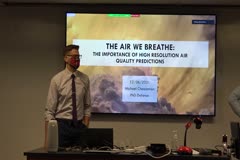
THE AIR WE BREATHE: THE IMPORTANCE OF HIGH RESOLUTION AIR QUALITY PREDICTIONS
December 06, 2021
Michael Cheeseman
Ambient air pollution has significant health and economic impacts worldwide; and yet, even in the most developed countries, monitoring networks often lack the spatiotemporal density to adequately resolve air pollution gradients. Furthermore, though air pollution impacts the entire population, it can disproportionately impact the disadvantaged and vulnerable communities in society. Pollutants…
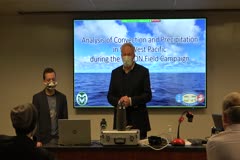
Analysis of Convection and Precipitation in the West Pacific During the PISTON Field Campaign
December 06, 2021
Kyle Chudler
In the tropics, convection and precipitation are important meteorological phenomena which impact the atmosphere both locally and globally. As meteorological observations over the open oceans where this precipitation occurs are typically scant or non-existent, ship-based field campaigns are required to study these precipitating systems in detail. The latest such project is the Propagation of…
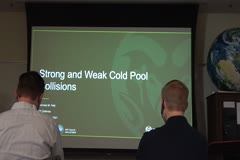
Strong and Weak Cold Pool Collisions
November 30, 2021
Nicholas Falk
Collisions between convective cold pools commonly initiate new convective storms. This occurs through enhancements to the vertical velocity through mechanical forcing, and increased water vapor content via thermodynamic forcing. The goal of this study is to investigate the impact of the following four parameters on the mechanical and thermodynamic forcing associated with cold pool collisions:…
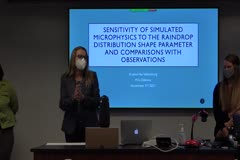
Sensitivity of simulated microphysics to the raindrop distribution shape parameter and comparisons with observation
November 03, 2021
Kristen Van Valkenburg
Representation of precipitation microphysics remains a challenge in numerical modeling. Model simulations using two-moment bulk microphysics require a priori choices, such as the rain size distribution shape parameter (nu), which is used to determine the width of the rain drop size distribution (DSD). Selection of nu is often somewhat arbitrary being due, in part, to a lack of observations on…
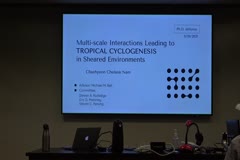
Multi-scale Interactions Leading to Tropical Cyclogenesis in Sheared Environments
November 01, 2021
Chaehyeon Chelsea Nam
To be, or not to be, that is the question of tropical cyclogenesis. Only a small fraction of tropical disturbances eventually develop into tropical cyclones (TCs). Accurate forecasts of tropical cyclogenesis are difficult because TC development involves a wide range of scales from the stochastic convective scale to a quasi-balanced large-scale flow. This dissertation examines the factors that…
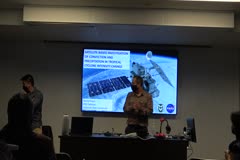
Satellite-based Investigation of Convection and Precipitation in Tropical Cyclone Intensity Change
October 27, 2021
Naufal Razin
Multiple hypotheses on the role of convection and precipitation in tropical cyclone intensity change have been proposed, but a scientific consensus has not yet been obtained. Some recent studies emphasize the importance of asymmetric deep convection in intensification, while others emphasize the importance of more symmetric precipitation that is not necessarily deep. To help provide clarity on…
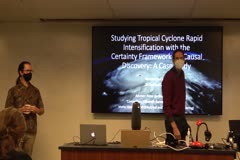
Studying Tropical Cyclone Rapid Intensification with the Certainty Framework for Causal Discovery: A Case Study
October 25, 2021
Michael DeCaria
Despite large advances in modeling tropical cyclone (TC) rapid intensification (RI), predicting TC RI still proves difficult. Predicting when RI occurs is one difficulty, and predicting how much a TC will intensify is another. Furthermore, there are many processes that combine and interact to drive RI, and showing how they combine and interact is an ongoing discussion. The certainty framework…
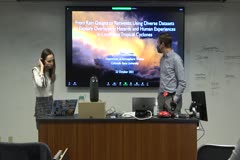
From Rain Gauges to Retweets: Using Diverse Datasets to Explore Overlapping Hazards and Human Experiences in Landfalling Tropical Cyclones
October 22, 2021
Allie Mazurek
Landfalling tropical cyclones (LTCs) are responsible for numerous hazards, including damaging winds, storm surge, inland flooding, and tornadoes. Furthermore, multiple hazards may threaten an area at the same time, which raises challenges from a prediction, warning operations, and human impacts standpoint. Previous research has approached overlapping tornado and flash flood events—which…
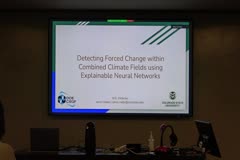
Detection of forced change within combined climate fields using explainable neural networks
October 19, 2021
Jamin Rader
Assessing forced climate change requires the extraction of the forced signal from the background of climate noise. Traditionally, tools for extracting the forced climate change signals have only focused on one atmospheric variable at a time, however, using multiple variables can reduce noise and allow for easier detection of the forced response. Following previous work, we train artificial…
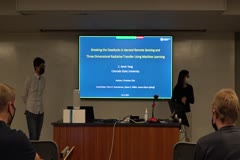
Breaking the Deadlock in Aerosol Remote Sensing and Three-Dimensional Radiative Transfer Using Machine Learning
October 12, 2021
Kevin Yang
In the recent IPCC report, aerosols remain one of the primary sources of uncertainty in understanding the Earth’s radiation budget in changing climate. To reduce the uncertainty, knowledge of aerosol properties and their interactions with clouds needs to be advanced. Our current understanding of aerosols has largely relied on passive satellite observations. Unfortunately, because satellite…
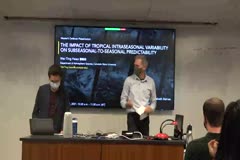
The Impact of Tropical Intraseasonal Variability on Subseasonal-to-Seasonal Predictability
September 08, 2021
Wei-Ting Hsiao
Subseasonal-to-seasonal (S2S) timescales have been identified as a gap in weather forecast skill at 2 weeks to 2 months lead times. This timescale is set by midlatitude synoptic predictability limits, and sits between the typical weather timescale and the longer annual to interannual periods that may have skill due to knowledge of low-frequency phenomena such as El Niño-Southern Oscillation…
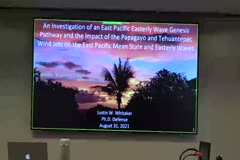
An Investigation of an East Pacific Easterly Wave Genesis Pathway and the Impact of the Papagayo and Tehuantepec Wind Jets on the East Pacific Mean State and Easterly Waves
August 31, 2021
Justin Whitaker
Part one of this dissertation investigates the transition of a Panama Bight mesoscale convective system (MCS) into the easterly wave (EW) that became Hurricane Carlotta (2012). Reanalysis, observations, and a convective-permitting Weather Research and Forecasting (WRF) model simulation are used to analyze the processes contributing to EW genesis. A vorticity budget analysis shows that…
